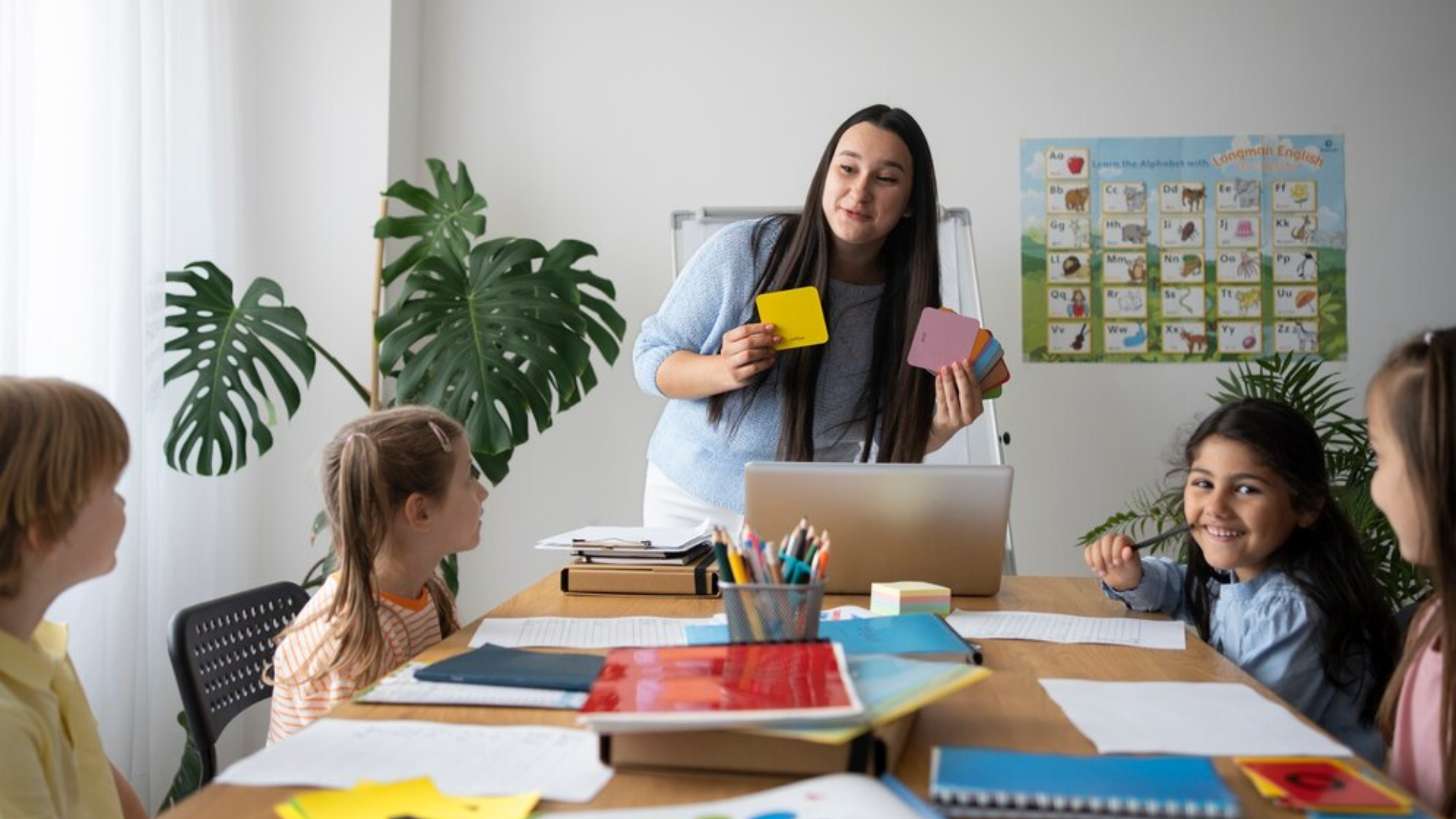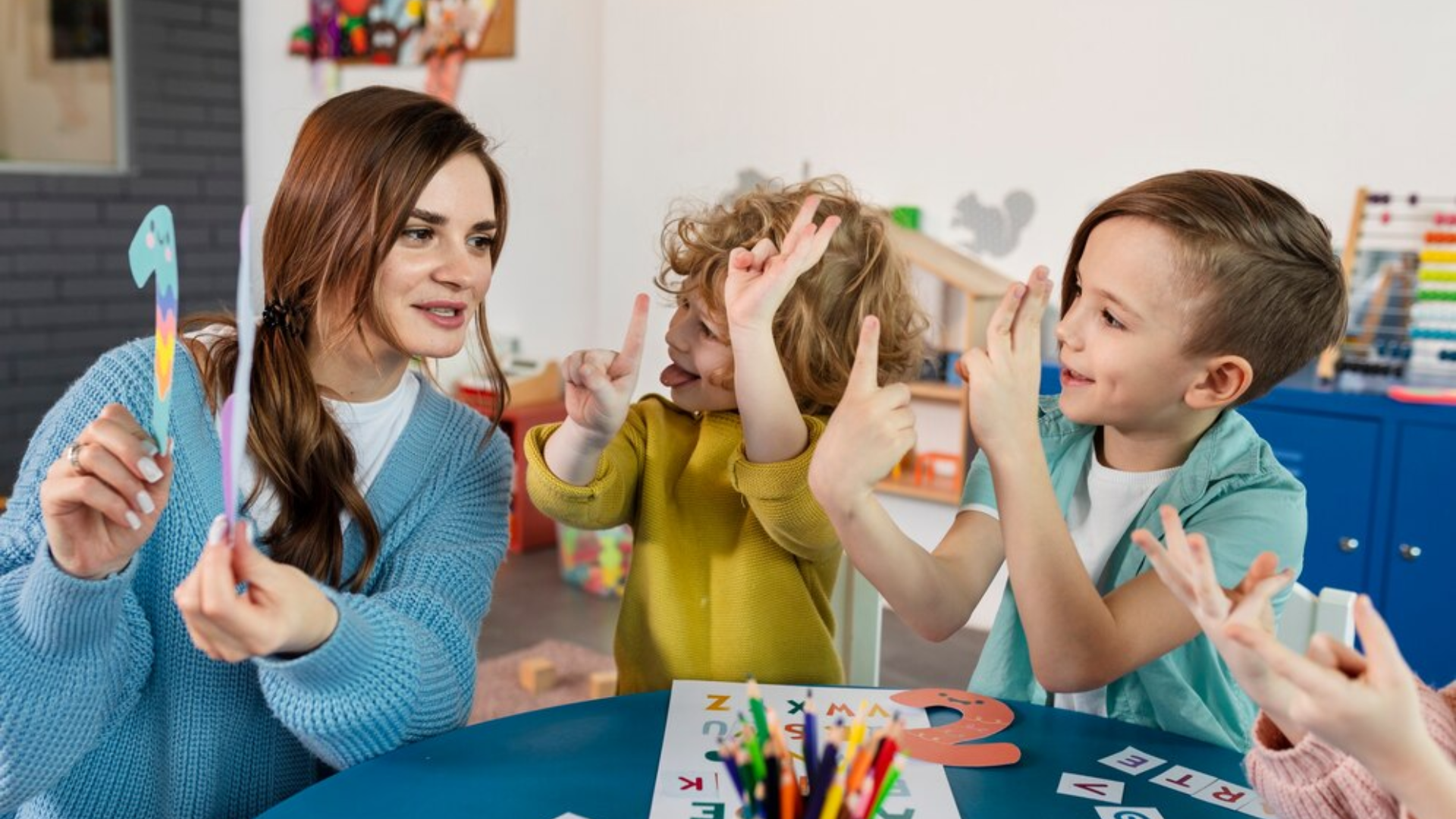Screen Time for Toddlers: What’s Too Much?

In today’s digital world, it’s hard to avoid screens. From smartphones and tablets to televisions and computers, technology is an integral part of everyday life. However, when it comes to toddlers, the question often arises: How much screen time is too much?
As parents and caregivers, it’s important to understand the potential impact of screen time on toddlers’ development. While technology can offer educational benefits and entertainment, excessive screen time can have negative effects on a child’s physical, cognitive, and social development. At Oakridge Children’s Academy, we believe in creating a balanced approach to screen time that promotes healthy growth and development for young children.
In this blog post, we will explore the effects of too much screen time on toddlers, offer expert guidelines for healthy screen use, and share strategies for setting appropriate limits.
Why Is Screen Time a Concern for Toddlers?
The American Academy of Pediatrics (AAP) suggests that children under the age of 2 should have no screen time, except for video chatting. After age 2, children should have no more than one hour of screen time per day. While screen time can be educational, there are several reasons why too much screen use is concerning for toddlers:
- Impact on Brain Development: Toddlers’ brains are rapidly developing, and excessive screen time can interfere with critical learning opportunities. Too much screen time can hinder a toddler’s ability to engage in face-to-face interactions, which are essential for developing social skills and emotional intelligence.
- Disrupted Sleep Patterns: Excessive screen time, especially close to bedtime, can interfere with a toddler’s sleep. The blue light emitted from screens can disrupt the production of melatonin, the hormone that regulates sleep, making it harder for children to fall asleep and stay asleep.
- Reduced Physical Activity: Toddlers need plenty of physical activity to develop motor skills, strengthen muscles, and promote overall health. Too much screen time can contribute to a sedentary lifestyle, which may increase the risk of obesity and developmental delays.
- Behavioral Issues: Spending too much time on screens can lead to increased irritability, difficulty focusing, and problems with emotional regulation. Some research has also suggested a connection between high screen time and attention problems, such as ADHD.
While these concerns are valid, it’s essential to recognize that not all screen time is equal. Some screen time can be educational and help toddlers develop important skills, such as language and problem-solving abilities. The key is moderation and mindful use of technology.
Guidelines for Healthy Screen Time for Toddlers
The AAP provides clear guidelines for screen time, which can help parents and caregivers set healthy boundaries for their toddlers:
Under 18 months: Avoid screen time except for video chatting. Babies and toddlers learn best through hands-on exploration and direct interaction with caregivers. If you do choose to introduce screens, keep it brief and opt for high-quality, educational content.
18 to 24 months: If you decide to introduce screen time, ensure that it is high-quality and interactive, such as educational apps or videos. Watch together and engage with your child to help them understand what they’re seeing.
2 to 5 years old: Limit screen time to one hour or less per day. Choose age-appropriate, educational content and watch together whenever possible. This shared experience allows you to guide your child’s understanding of what they’re viewing and reinforces learning.
5 years and older: Set consistent limits on screen time and prioritize non-screen activities, such as playing outside, reading, or engaging in creative play. Encourage a healthy balance between screen time and physical activity, sleep, and face-to-face social interactions.
Strategies for Setting Limits on Screen Time
While it’s important to set limits on screen time, it’s equally important to create a positive environment where children can learn and play without feeling restricted. Here are some practical strategies for setting healthy limits:
- Create a Screen Time Schedule Establish a clear routine for when and how much screen time is allowed. For example, you can designate specific times for screen use, such as during breakfast or in the late afternoon. Having a set schedule helps your child understand when it’s time for screens and when it’s time for other activities.
- Set Screen-Free Zones Designate areas of the house where screen time is not allowed, such as the dining room or the bedroom. This encourages family bonding time during meals and ensures that screens don’t interfere with sleep.
- Use Screens Together Rather than letting your child watch TV or play games alone, sit with them and engage in the experience. Ask questions, point out things in the video, and relate what they are seeing to real-life situations. This turns screen time into a shared learning experience, which is beneficial for your toddler’s development.
- Model Healthy Screen Habits Children learn by observing their caregivers, so be mindful of your own screen habits. Set an example by limiting your screen time and prioritizing other activities, such as reading, outdoor play, or family interactions. When children see their caregivers engaging in balanced activities, they are more likely to mimic these behaviors.
- Encourage Other Activities Balance screen time with plenty of opportunities for physical activity, social interaction, and creative play. Offer toys that stimulate imagination, such as building blocks, dolls, or art supplies. Encourage your child to play outside, explore nature, or engage in activities that promote fine and gross motor skills.
- Turn Off Screens During Meals and Bedtime Meals and bedtime are crucial moments for connection and winding down. Make screen-free zones during these times to encourage conversation, mindfulness, and bonding with your child. This helps reinforce the importance of family time and healthy sleep routines.
Quality Matters More Than Quantity
While limiting screen time is important, it’s equally crucial to focus on the quality of the content your toddler consumes. Not all screen time is created equal. High-quality, educational programs and interactive apps can foster learning and development, but mindless, passive viewing can hinder cognitive and social growth.
Look for content that:
- Encourages active engagement: Choose programs or games that require your child to think, problem-solve, or interact with the screen.
- Promotes learning: Select content that teaches basic skills, such as colors, numbers, shapes, or language development.
- Is age-appropriate: Ensure that the content is suitable for your child’s age and developmental stage, avoiding material that may be too complex or overstimulating.
Establishing a peaceful and consistent bedtime routine not only helps children get the rest they need but also strengthens the parent-child bond through calm, respectful communication. That’s why the insights in our post,
Creating a Calm Bedtime Routine That Works, beautifully complement the guidance found in
How to Talk to Young Children So They Actually Listen. Together, these strategies help create a supportive environment where children feel heard, understood, and ready to wind down at the end of the day.
Conclusion: Finding Balance in a Digital World
As technology becomes an ever-present part of daily life, finding a balance between screen time and other activities is more important than ever. By following expert guidelines, setting consistent limits, and ensuring that screen time is both purposeful and shared, you can help your toddler enjoy the benefits of technology while safeguarding their development.
At Oakridge Children’s Academy, we understand the challenges of navigating screen time in today’s world. By providing your child with opportunities for active play, creative exploration, and quality screen time, you are helping them build a healthy, well-rounded foundation for the future.
Remember, the key is balance—moderating screen time while ensuring that your toddler enjoys other enriching experiences that promote physical, cognitive, and emotional development.










